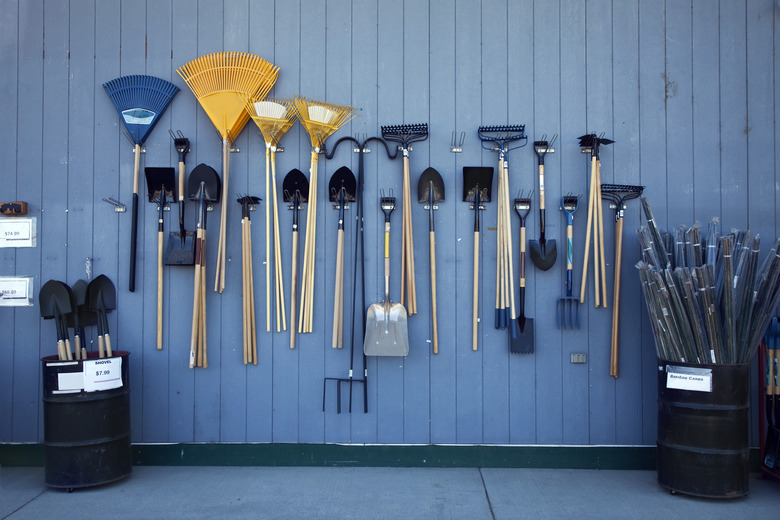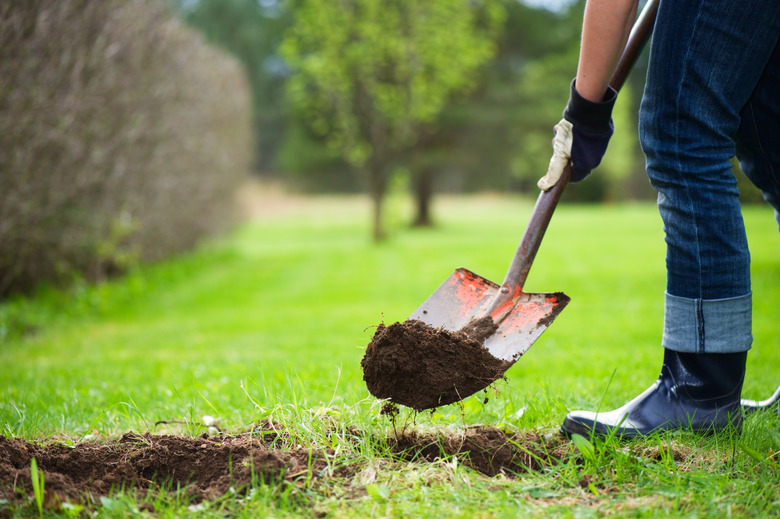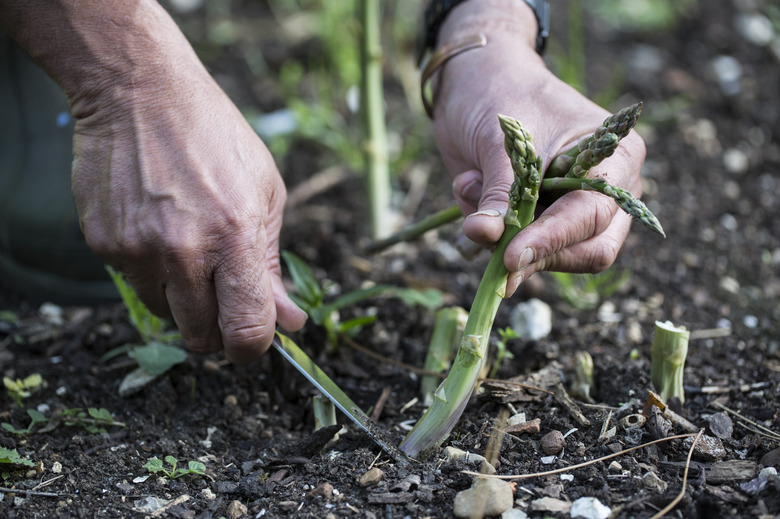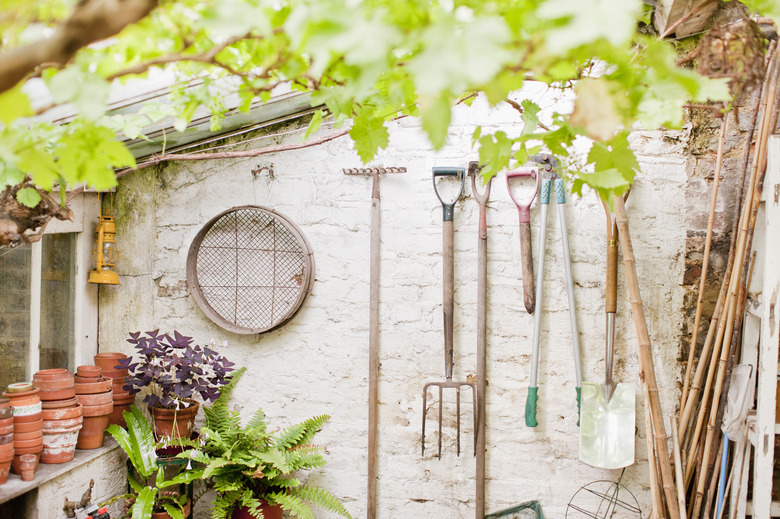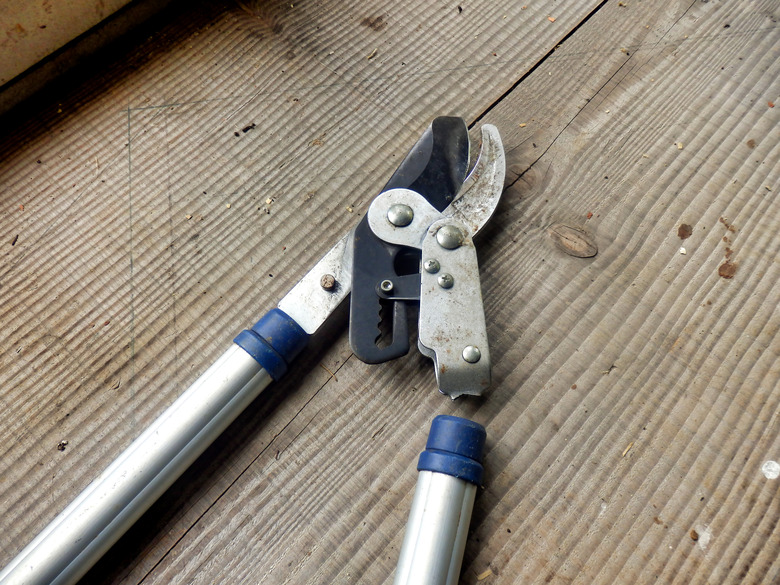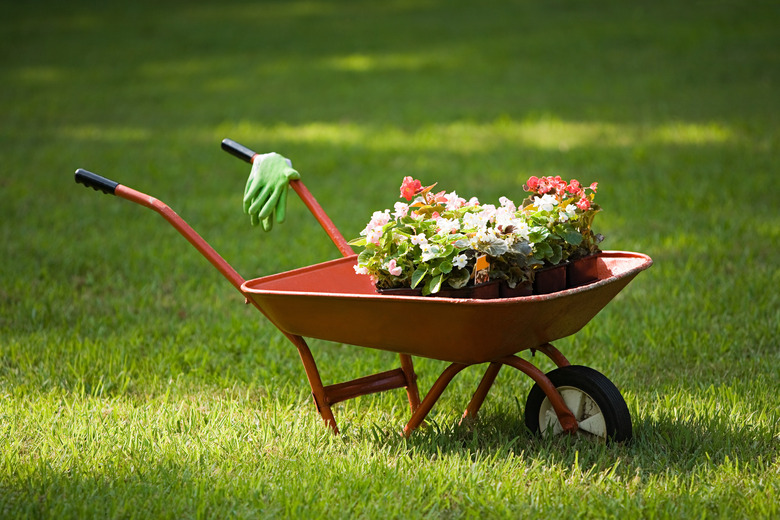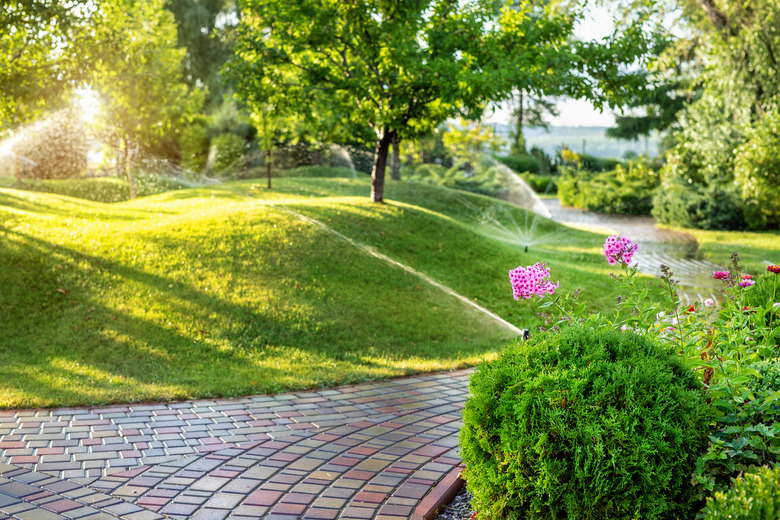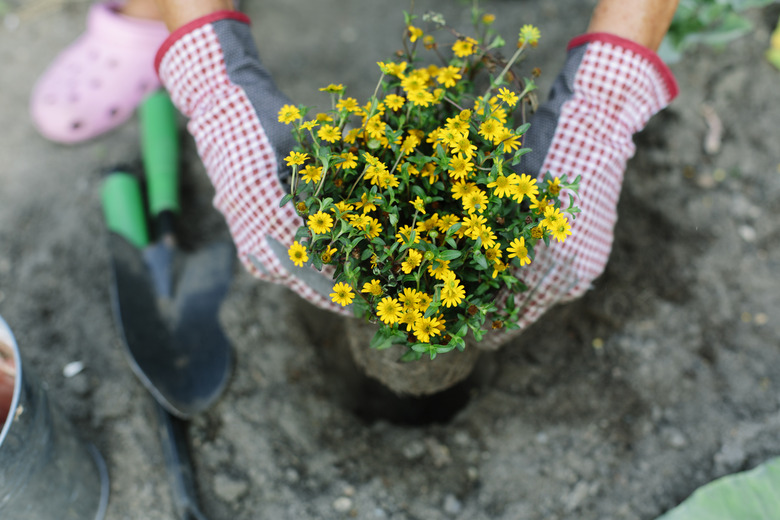8 Essential Garden Tools For Home Gardeners
Gardening, like so many other hobbies, requires you to invest not just your time and effort but also your money. You don't just need to purchase quality soil, planters and seeds or seedlings — you need to invest in at least the bare minimum of essential garden tools. Purchasing the proper tools will ensure you're not doing more work than necessary, not wasting your money on useless tools and not harming your plants with the wrong gardening tools.
That being said, the right tools will vary from gardener to gardener. For example, someone working container plants will need only a few hand tools, while someone with a whole acre of vegetable and flower beds will need to invest in a wide array of tools.
1. Garden Tools for Digging
1. Garden Tools for Digging
Anyone who finds themselves digging holes, scooping soil, transplanting larger plants and breaking up soil simply can't do so without at least one spade or shovel. For new gardeners, the two might seem too similar to distinguish between one another. While there is a bit of variety in shovel and spade designs, spades are shorter, have a smaller head and are straight, whereas shovels have a longer handle, a larger head and a rounded head.
While both are useful, spades are generally better for working in smaller areas, such as crowded gardens, because of their more diminutive size. Spades are also better for cutting straight lines through soil and ground cover. On the other hand, shovels are better for digging holes because the long handles allow for more leverage, and the larger heads remove more dirt. Shovels are also preferable for scooping up materials, such as soil, mulch, gravel and more. Whichever you decide to use, make sure it feels comfortable in your hands, is heavy duty enough for your most challenging tasks and has a sharp edge to make digging easier.
While many gardeners can get away with just using a spade or shovel, a garden hoe can also be quite useful. If you find yourself frequently digging shallow trenches for planting or weeding small or shallow-rooted weeds, you may benefit from a hoe. These garden tools are particularly useful for raking out shallow channels and for scraping new weeds out of the soil. They are not effective for large or deep-rooted weeds.
These garden tools each cost anywhere from $10 to $100, with plenty of quality options coming in at around $30.
2. A Soil Knife
2. A Soil Knife
While many people are familiar with the classic hand trowel, you'll get a lot more bang for your buck out of the Japanese gardeners' knife, also called a hori-hori. This device doesn't just take function as a trowel but also a knife, ruler, saw and more. It can be used to dig holes, cut roots, divide perennials, remove rocks, clean cracks, harvest plants, measure the planting depth of new seeds, slide plants out of pots, remove weeds and more. In fact, many professionals claim that these $15 to $50 devices are among the most essential gardening tools they own.
3. A Quality Weeder
3. A Quality Weeder
A hori-hori or hoe can both be quite handy for weeding, but if you have a lot of weeds, you may want a dedicated weeder as well. The Cape Cod weeder is a good option for targeting weeds below the surface, while a long-handled weeder with multiple claws is helpful for digging up weeds without bending and kneeling over and over. If you have a problem with dandelions, invest in a fishtail weeder that can remove deep roots. Weeders vary greatly in price based on the type and quality, but expect to pay between $10 and $50.
4. The Right Rake
4. The Right Rake
There are many different rakes out there, but you probably only need one or two of these garden tools. The most versatile rake is the bow rake, which is usually used for leveling soil and spreading out materials, such as mulch or gravel, but it can still be used for raking leaves and other debris. If you have a lot of leaves or light debris, a leaf rake is preferable since its loose tines run over grass, concrete and other materials more easily than those in a bow rake. A landscape rake, on the other hand, has particularly strong metal tines that can be used to level soil, gravel or mulch but are also strong enough to dethatch a lawn, though this is precisely why they aren't great for raking up leaves or other light debris.
Bow rakes and leaf rakes are some of the least expensive varieties, coming in between $10 and $50, with a number of quality options available for under $20. Landscape rakes are a little more expensive, starting at around $40 and going all the way up to $100, but you can get a quality landscaping rake for $50.
5. Garden Tools for Pruning
5. Garden Tools for Pruning
Whether you're using them to prune off dead twigs or harvest flowers, fruits or vegetables, a good set of pruning shears (also known as hand pruners or secateurs) is a must-have tool for any gardener. For most purposes, the best options are stainless steel bypass pruners, which are small enough for harvesting plants but strong enough to cut branches up to 3/4-inch thick. Make sure to get a high-quality set that feels comfortable in your hands and keep the blades sharp.
If you need to trim larger branches a bit higher up in the trees, invest in a good set of loppers as well. These can cut branches up to 2 inches thick but are not as comfortable to use, so keep pruning shears handy for smaller tasks.
For really large branches or those higher in the tree canopy, a long-handled pruning saw (also called a pole saw) may be necessary. These don't have a limit when it comes to branch width, but to save yourself some effort, you may want to invest in an electric pole saw.
Hand pruners can range from $10 to $65 (with quality ones coming in at around $30), while loppers are between $15 and $125 (expect to pay $50 for a good pair). Pole saws are a bit more expensive, coming in at $45 to $125 for manual options and $65 to $250 for an electric version. You can find a good electric pole saw for around $80.
6. A Wheelbarrow or Garden Cart
6. A Wheelbarrow or Garden Cart
When you need to move heavy items or large amounts of loose soil, mulch, gravel, etc., a wheelbarrow or garden cart will help speed up the process and make things easier on your back. Both tools have their advantages. A wheelbarrow with one front wheel is sometimes better for use on rough terrain, but it doesn't balance as well as a wheelbarrow with two front wheels or a garden cart with two front and two back wheels. Garden carts balance better and typically hold larger loads, but when you're on rough terrain, it can be harder to push. Whichever you choose, make sure it is sturdy and well-balanced with all-terrain tires to minimize bouncing while traveling over bumps.
If you have trouble lifting heavy materials into a wheelbarrow or garden cart, consider a GardenGlide, which is like a sled that allows you to pull your materials across rough surfaces with minimal lifting.
A wheelbarrow can cost anywhere from $40 to $450, but you should be able to find a quality model for $100. There are fewer garden carts out there than wheelbarrows, so the price for these varies between $70 and $240, with the best options coming in at around $170. GardenGlides are a cheaper alternative at around $45.
7. An Effective Watering Method
7. An Effective Watering Method
You can't grow plants without water, and while container gardeners may do just fine with a watering can, most growers need a hose. A standard garden hose is very versatile, but you may also find a soaker hose or drip irrigation system to be a more effective, low-maintenance alternative to keep your plants properly watered. If you go with a standard hose, invest in a good nozzle, watering wand or sprinkler to make spraying your plants easier.
When shopping for hoses, look for a 5/8-inch reinforced rubber hose with cast brass fittings. It should be long enough to reach your whole garden but not excessively long, as the extra length will just get in your way. A good hose should have a burst pressure above 350 PSI to avoid springing leaks.
While the price of hoses varies dramatically based not only on quality but also on length, expect a good 50-foot hose to cost around $50 and a 100-foot hose to cost around $65.
8. Quality Gardening Gloves
8. Quality Gardening Gloves
Good gardening gloves don't just keep dirt off your hands; they also protect you from scratches or blisters. While there are many different types of gloves out there, you'll generally need a heavy-duty pair for difficult tasks, like pruning, digging and working with thorny plants, and you'll want a lightweight pair that allows for more dexterity to do things like picking up seeds, transplanting plants and picking up leaves. For a good balance between protection and dexterity, look for a lightweight pair of synthetic leather gloves or nitrile-coated polyester gloves.
You can find gardening gloves for $5 to $50, but most gardeners should be fine with gloves that cost between $5 and $15.
References
- Morning Chores: 7 Best Weeding Tools to Free Your Garden from Annoying Weeds Easily
- Fix: Essential Tools for Beginner Gardeners
- Better Gardener's Guide: 7 Essential Gardening Tools for Beginners
- Gardener's Edge: 10 Essential Gardening Tools Every Gardener Needs
- Gardening Products Review: Best Garden Hoses: Guide & Recommendations
